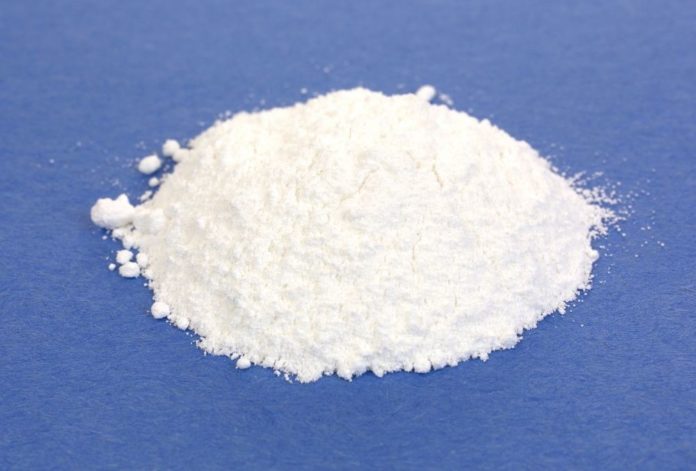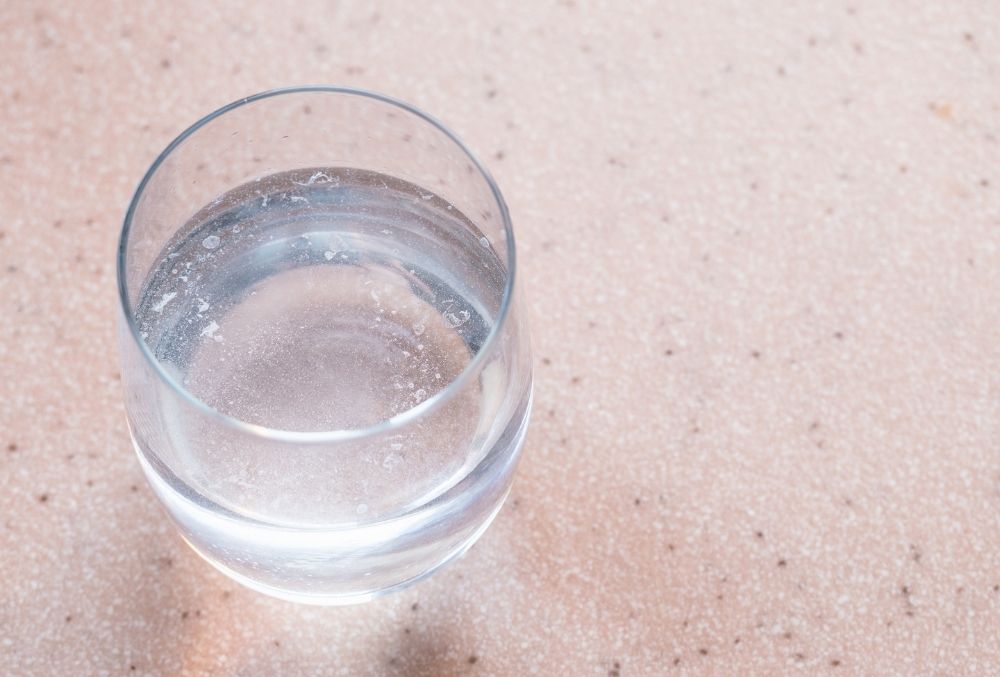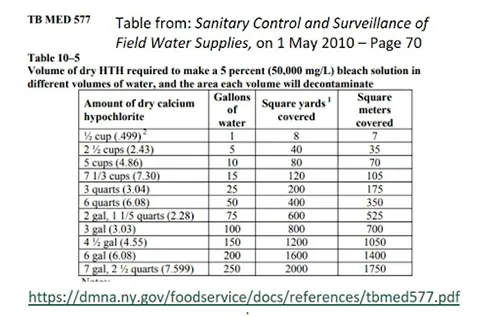If you are the kind of person who is constantly concerned about the status of your drinking water, then chances are you have researched the various methods that can be used to disinfect your water and make it suitable for human consumption. Whether that be through chemicals or other natural means.
These days, most experts agree that chlorine bleach is one of the best ways to clean your water, as the chemical works to disinfect your supply and make it drinkable.
However, this does not mean that the bleach does not come with its setbacks, as the product has a short shelf life and can lose its strength with age.
Because of this, some people are now relying on other methods to disinfect their water, with one of the most popular being granulated calcium hypochlorite.
Not only is this substance known for its uncanny ability to disinfect water, but it also comes with a shelf life of ten years and can be safely used by dedicated preppers.
So if you want to know how you can use calcium hypochlorite to disinfect your water, then you have come to the right place.
In the following article, we have collected some important information about how you can use this substance to clean your water, while explaining how to approach the task with caution.
So if you are ready to keep your drinking water clean, then we have everything you need to get started…
How To Disinfect Water Using Calcium Hypochlorite
While using calcium hypochlorite to clean your drinking water may sound like a long and complex process, it can be easily done with the correct supplies and measurements.
In fact, a one-pound bag of calcium hypochlorite is all you need to disinfect thousands of gallons of water, with the substance being known for its powerful properties.
In most cases, you will only need a small amount of the substance to disinfect your water, as the compound is incredibly potent even when used in limited quantities.
For example, if you wanted to disinfect 55-gallons of water, then you would only need to add a quarter teaspoon of the dry powder to clean the supply.
However, if you want to disinfect smaller amounts of water, then you will need to make a 5% chlorine stock solution, as this will help to heighten the effectiveness of the process.
By using the chart we have provided, you will be able to determine the concentration of chlorine needed when mixing your solution.
Fortunately, the army, navy and air force recently released a publication called ‘Sanitary Control and Surveillance of Field Water Supplies’, which provides detailed information concerning water disinfection and the standards set when using calcium hypochlorite as your primary method.
Because of this, the following calculations are those of military standards:
How To Calculate Chlorine Stock Solution
When it comes to mixing your 5 percent chlorine stock solution, a general rule of thumb is to dissolve one and a half teaspoons of calcium hypochlorite in a single cup of water. To help you further understand this recipe, we have outlined the necessary calculations in the following guide:
5 % Chlorine Stock Solution Recipe
| Water | Dry 68% Calcium Hypochlorite |
| 1 cup | 1 ½ teaspoons |
| 1 quart | 2 tablespoons |
| 2 quarts | 4 tablespoons |
| 1 gallon | 8 tablespoons |
Once you have finished making your 5 percent chlorine solution, you can use it to disinfect your drinking water, in a similar fashion to how you would use household chlorine bleach.
By storing the calcium hypochlorite in powder form, you will be able to make small amounts of the fresh liquid bleach solution whenever you need, while ensuring that you have the correct amount of chlorine to finish the job.
For the best results, we recommend experimenting with your own stock solution, which can be stored in a labelled glass or plastic container. However, if you do not have access to a viable container, then it is also possible to store the solution in an old bleach bottle.
This will allow you to keep the solution safe and mark the required measurements on the side. All you need to do is fill the bottle to the required mark and then add the correct amount of calcium hypochlorite to the solution.
Not only does this method make the mixing process much easier, but it also makes it safer, as people will be able to see exactly what the bottle contains. However, it is also advisable to label the bottle with the original date that you mixed the formula.
When your chlorine stock solution is ready, you can use it with the standard instructions for disinfecting water using regular chlorine bleach. Just make sure that you add the correct amounts and allow half an hour between adding the solution and drinking the water.
We have provided the necessary calculations to mix your chlorine solution in the following guide:
Chlorine Bleach Water Disinfection
| Amount Of Water | Amount of Bleach (Clean Water) | Amount of Bleach (Dirty Water) |
| 1 quart | 2 drops | 4 drops |
| 2 drops | 4 drops | 8 drops |
| 1 gallon | 8 drops | 16 drops |
| 5 gallons | ½ teaspoon | 1 teaspoon |
| 15 gallons | 1 ½ teaspoon | 1 tablespoon |
| 30 gallons | 1 tablespoon | 2 tablespoons |
| 55 gallons | 5 ½ teaspoons | 11 teaspoons |
How To Safely Store Calcium Hypochlorite
While calcium hypochlorite can be used to disinfect drinking water, it still remains a dangerous chemical that requires special handling and storage.
So if you are a passionate prepper, then chances are you have experienced some setbacks concerning how to store the compounds in a safe and measured way.
For example, some preppers have been known to store their calcium hypochlorite in special containers, which they can access in case of emergencies.
In most instances, these containers were made from materials such as stainless steel and contained the calcium still in its original bottle and wrapped inside a plastic bag. However, after only a few years, these emergency kits began to rust and corrode, exposing the chemicals within.
This happened because of the chlorine inside the compound, which is known to be corrosive to metals, especially stainless steel and aluminium.
And while it remains unclear if the chemical itself was the cause of the corrosion, it still remains the prime suspect behind the initial damage.
According to scientific studies, calcium hypochlorite is a stable substance until it reacts with reducing agents, combustible materials, organic compounds, acids and moisture.
Because of this, the chemical is particularly corrosive when introduced to certain metals and can even prove disastrous to materials such as stainless steel and glass.
Beyond this, the chemical is also extremely hazardous and could result in physical damage should it come into contact with your skin and eyes. For this reason, we recommend wearing protective gear when working with this substance.
However, this does not mean that the chemical reacts to everything, as dry calcium hypochlorite is incapable of reacting with polyethene, polypropylene, polystyrene, Ryton, PVDF and Teflon.
Because of this, you will need to make sure that you are storing the chemical in a container made from one of the previously mentioned materials.
On the other hand, some preppers prefer to store their calcium hypochlorite inside their original container and place it inside a glass bottle with a sealed plastic lid, before storing it in a cool and dry place.
However, in most cases, this method has resulted in plastic tearing, which can lead to it mixing with the powder and causing a reaction.
So if you want to store your calcium hypochlorite correctly, we recommend pouring it into a glass jar and labelling it with the proper instructions. While the shape of the jar may make this process difficult, it is one of the best methods to use.
Beyond this, it is also possible to store smaller amounts of the chemical in airtight prescription bottles, which will usually come with a child-resistant lock. However, it is also important to remember that the plastic is permeable, which means it should never be stored in a tightly sealed container.
Instead, we recommend storing these small bottles in your first aid kit or survival pack, as this will allow you to stock a small supply in case of any emergencies. Just make sure to never store the bottles near anything made from metal or another corrosive material.
Are There Limitations When Using Chlorine?
Although chlorine has been used to effectively clean drinking water, this does not mean that it will deactivate every protozoan it encounters, as giardia and cryptosporidium have been known to survive chlorine water disinfection.
According to the American Red Cross, you should only use liquid chlorine bleach with a sodium hypochlorite concentration of 5.25% to 6%, as this acts as the only live ingredient in the formula.
While it is still possible to use plain liquid bleach with no thickeners or additives, the product will only have a shelf life of six months, which means you will have limited time to use it.
During this time, the chlorine levels in the product will begin to decrease, which can make it lose its power and render it ineffective. So if you want to use household chlorine bleach, you will need to constantly rotate your stock to ensure you are killing any pathogens in your water supply.
Because of these limitations, we recommend using granulated calcium hypochlorite, as it remains an effective alternative to chlorine disinfection.
Unlike household bleach products, calcium hypochlorite has a usable shelf life of ten years and can be easily purchased due to its various properties.
In most cases, calcium hypochlorite is sold as a product called ‘Pool Shock’, where it usually comes in powder or granulated form. While both products are perfectly capable of disinfecting your water supply, the latter will contain 68% calcium hypochlorite and other essential ingredients.
However, you will need to make sure that you are constantly rotating your supply, as this will yield the freshest product.
When it comes to mixing up your chlorine stock solution, the calcium hypochlorite will begin to weaken at a similar rate to household bleach, which is why we recommend using fresh batches during the mixing process.
If you continue to use an old product, then you could risk the compound not dissolving into the solution, which can make the whole process much more complicated.
For the best results, we recommend purchasing a large case of calcium hypochlorite and keeping 1-2 bags before distributing the rest among your friends and family.
Final Thoughts
The ability to disinfect drinking water and surface may one day prove critical to your survival, which is why we believe using calcium hypochlorite is the best method to ensure the cleanliness of your supply.
And while chlorine disinfection has proven to be the most effective option, this does not mean that it doesn’t come with its limitations.
While chlorine can be used to clean drinking water and reduce the spread of harmful bacteria, it can be difficult to store in liquid form and comes with a reduced shelf life that could greatly hinder you in case of emergencies.
On the other hand, calcium hypochlorite is an inexpensive product that has a long shelf life and various useful properties.
If you want to purchase your own supply of calcium hypochlorite, then you can find the product at pool supply stores or on platforms such as Amazon.
However, you may need to filter the residual chlorine from your water supply before drinking it, which means you will also need a filter to make the water taste better.
via SHTFPreparedness





